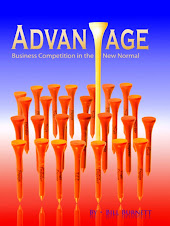Arranged marriages tend to work. If we use divorce rate as the measure of success for marriages, then statistics place the divorce rate for arranged marriages much lower than those where marriages result from romantic personal choice.
Why does this occur?
Marriage is a social contract. The reason the bride and groom exchange vows in public in front of all the people that matter to them, is because this is supposed to give the promises more importance. Marriage is more than just a contract between the couple, it is a social contract with peer pressure weighing in to ensure promises are kept. It turns out that the power of the peer pressure is determined on the value placed on those peer relationships.
In societies where the intragenerational relationship of the family and of community is much more valued than the marital relationship, that peer pressure endures and the public elements of promises are more likely to be kept. People stay married. In more nomadic societies like the USA, where such social relationships play a smaller role, the peer pressure to keep the public elements of promises diminishes. A lot of marriages break up. Peer pressure matters.
In the motivational model we use, we know that the need to have a social identity is a powerful motivator of behavior. It’s what’s people think of us that matters. If there was a huge social stigma associated with divorce, then there’d be fewer divorces.
So, what does this have to do with business?
In his new book “Advantage” Patrick Lencioni says, “Peer Pressure: Notice, that I’m focussed on peers. That’s because peer-to-peer accountability is the primary and most effective source of accountability on the leadership team of a healthy organization. Most people assume that the leader of an executive team should be the primary source of accountability -- and that’s the norm in most unhealthy organizations.” But peer pressure is a more powerful motivator because it is how we establish our social identity in a company.
For peer pressure to work in a company, the peer relationships must be valued relationships. The real trick is making that happen, (and we do that really well).
When we implement the Entrepreneurial Operating System we do several things to cause those relationships to develop and flourish. First, the process we use to build the accountability chart causes the members of the team to invest in one another’s success. Second, we use discipline around company values to ensure the people working together share the same values. When someone shares your values the relationship tends to grow naturally. Third, we do something very subtle every week that deepens these relationships. And finally, we put a structure around accountability that forces it to the surface over and over again, every week. Interestingly, the team ends up loving it.
Who benefits the most? Well one thing we know, the CEO thinks that it’s the CEO. Peer-to-peer accountability takes all the pressure off the CEO. No longer does the CEO ever have to ask “Say, you were working on XYZ project. Where are you on it?” This is a painful question to ask, because you know if you have to ask it, the answer is not going to be good. In the EOS implementation, this question never needs to be asked, because the CEO knows that the right things are being worked on and knows the exact status of every initiative every week. If something is likely to go off-track, the pressure of the peer group will ensure it gets resolved.
Patrick Lencioni goes on to say, “I realize that people who are used to working on non-cohesive teams will think all this sounds like a fairy tale. To those who have experienced the reality of cohesive teams, it is simply the most effective way to keep one another focussed on what matters most.” Both personally and professionally.
If you know a company where this sort of thing would be valued by the leadership team and the CEO, please let me know. The EOS methodology makes peoples lives better, and we love making people’s lives better.







